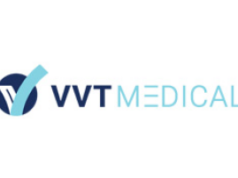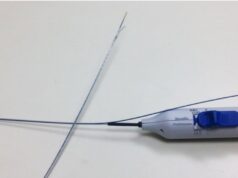Mechanochemical ablation (MOCA) is a superior option to endovenous laser ablation (EVLA) for the treatment of primary varicose veins, according to the findings of a randomised controlled trial which compared the two modalities. Published in the Journal of Vascular Surgery: Venous and Lymphatic Disorders (JVSVL), the study showed that there were better clinical outcomes and a lower rate of postoperative phlebitis in patients treated with MOCA.
Commenting on “the recent emergence of newer, non-tumescent techniques”, and their potential to offer an alternative to minimally invasive endothermal procedures like EVLA, first author Ahmed M Tawfik (Zagazig University, Zagazig, Egypt) and colleagues explain that techniques such as MOCA “advantageously avoid the hazards of tumescent anaesthesia, together with being cost-effective, as shown by initial studies”.
Although the investigators underline that MOCA has been shown to be comparable to endothermal techniques, in terms of feasibility, efficacy and procedural safety, there have been few studies comparing the two. The objective of this trial, then, was “to prospectively compare the surgical outcome of using EVLA and MOCA in management of patients with primary varicose veins”.
“The present study prospectively recruited 100 patients with primary varicose veins,” write Tawfik et al, outlining the design of the trial. Patients were eligible to participate in the study if they had primary great saphenous vein incompetence, either with or without incompetent perforators, as determined by a colour duplex ultrasound examination, as well as C2–C4 varicose veins.
In terms of exclusion criteria, there were a number of reasons for patients not to be enrolled in the trial: pregnancy; a history of superficial thrombophlebitis, deep venous thrombosis, or pulmonary embolism; healed or active ulcers; and a number of other severe medical illnesses.
“They were randomly and equally allocated to one of two treatment groups: the EVLA group (n = 50) or the MOCA group (n = 50). Before intervention, all patients underwent clinical and ultrasound assessment of the vascular system,” continue the investigators.
In addition, the authors note that the Venous Clinical Severity Score (VCSS) was used to assess clinical severity, while patients were also asked to complete the Chronic Venous Insufficiency Questionnaire. With respect to outcomes, the study had a primary outcome of treatment success—defined as “complete occlusion of the affected vein segment assessed by duplex ultrasound”—as well as secondary outcomes such as operative time and postoperative complications.
One of those complications is phlebitis, which was defined in this study as “the presence of the four cardinal symptoms and signs of inflammation (pain, redness, oedema, and tenderness) along the anatomic course of the vein”.
After their intervention, patients enrolled in the trial were followed up at one week, one month, six months, and 12 months. Overall, operative success was achieved in all patients. The cohort treated with MOCA had significantly shorter operative times when compared with the EVLA group (29.6±9 minutes vs. 46.9±10 minutes; p<0.001), while VCSS scores in MOCA patients were, again, significantly lower.
Dissecting the results of the study further, Tawfik et al write: “Perceived pain was significantly improved in both groups postoperatively with no significant differences. The Chronic Venous Insufficiency Questionnaire was significantly improved after 12 months of operation without significant differences between groups. MOCA patients had significantly lower rate of postoperative phlebitis and significantly shorter time to return to work.”
Regarding the study’s limitations, the investigators acknowledge that the sample size chosen was arbitrary, which many mean the study is underpowered to detect some statistically or clinically relevant endpoints. Furthermore, the follow-up period reported is limited in this trial to one year.
However, Tawfik et al conclude that “this study suggests MOCA for primary varicose veins has considerable advantages over EVLA. Besides its convenient technical feasibility, it provides better clinical improvement, less frequency of postoperative complications, and shorter time to return to normal activities.”












